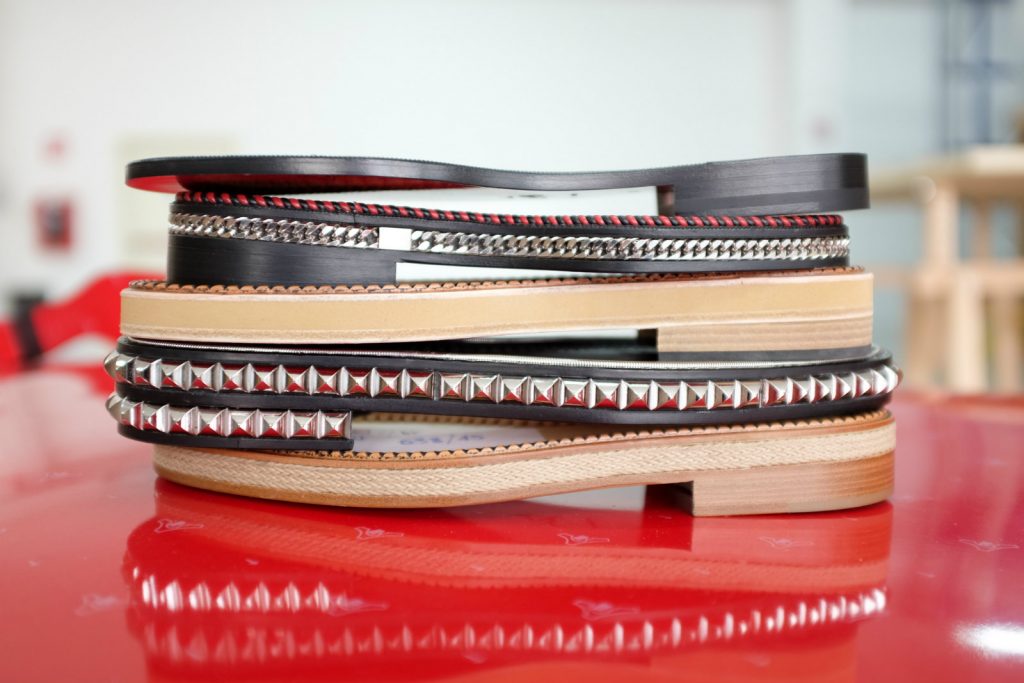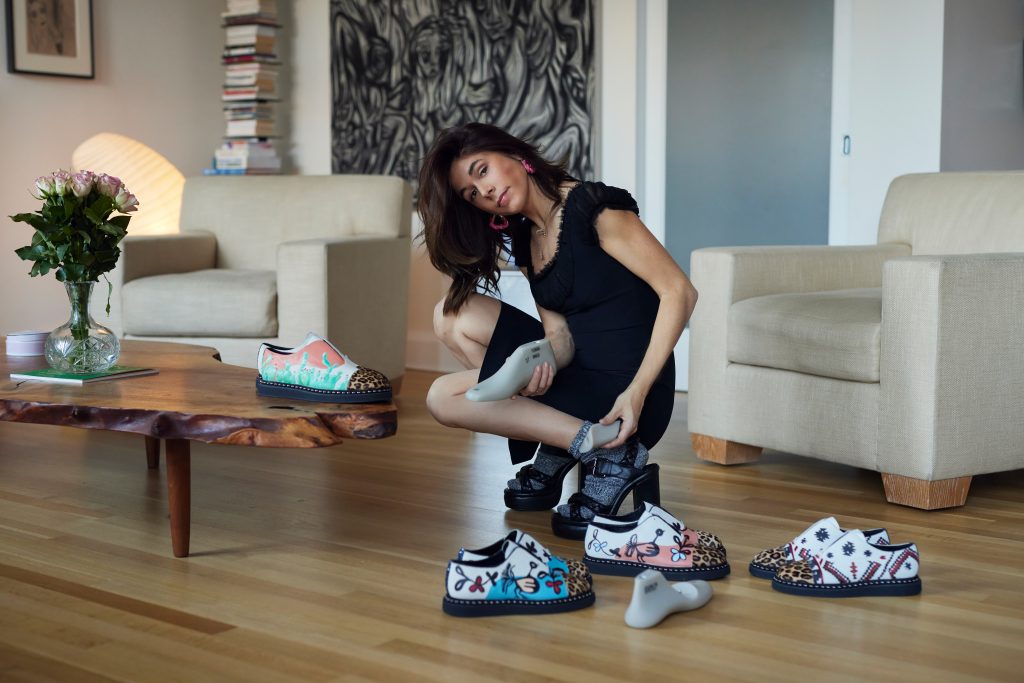Factory Visit: Christian Louboutin
The Naples location where skilled artisans create the brand’s trademark shoes
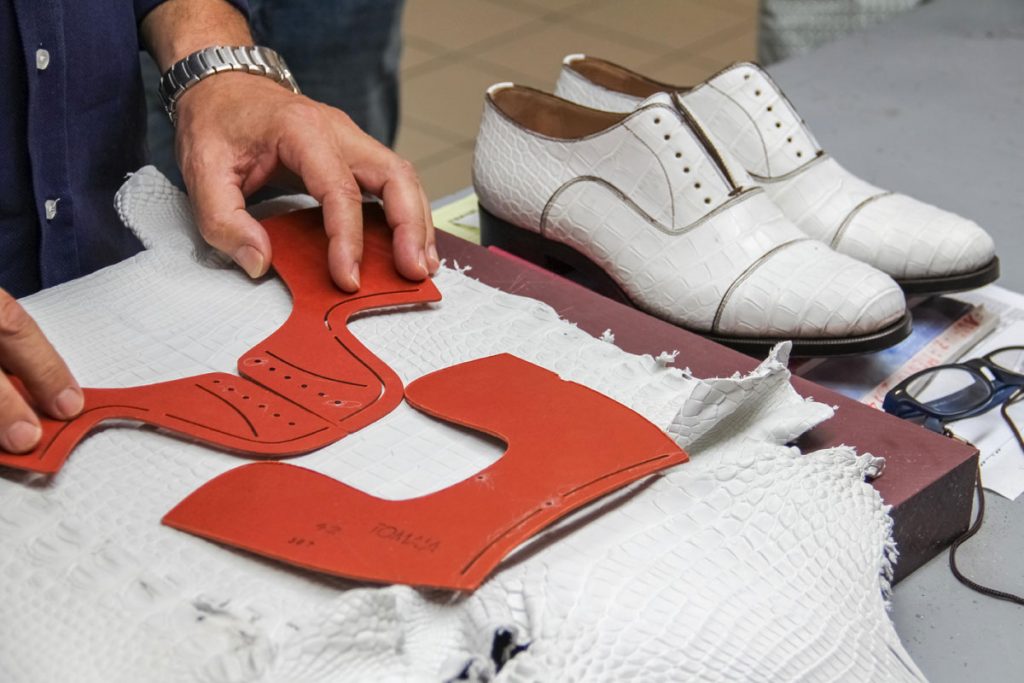

Since setting up his eponymous label in 1991, French designer Christian Louboutin’s shoes have become synonymous with power, prestige and class thanks to their sexy, edgy design and extreme creativity. Lesser known is the fact that Louboutin produces men’s footwear as well—something that should be on the radar of all shoe enthusiasts.
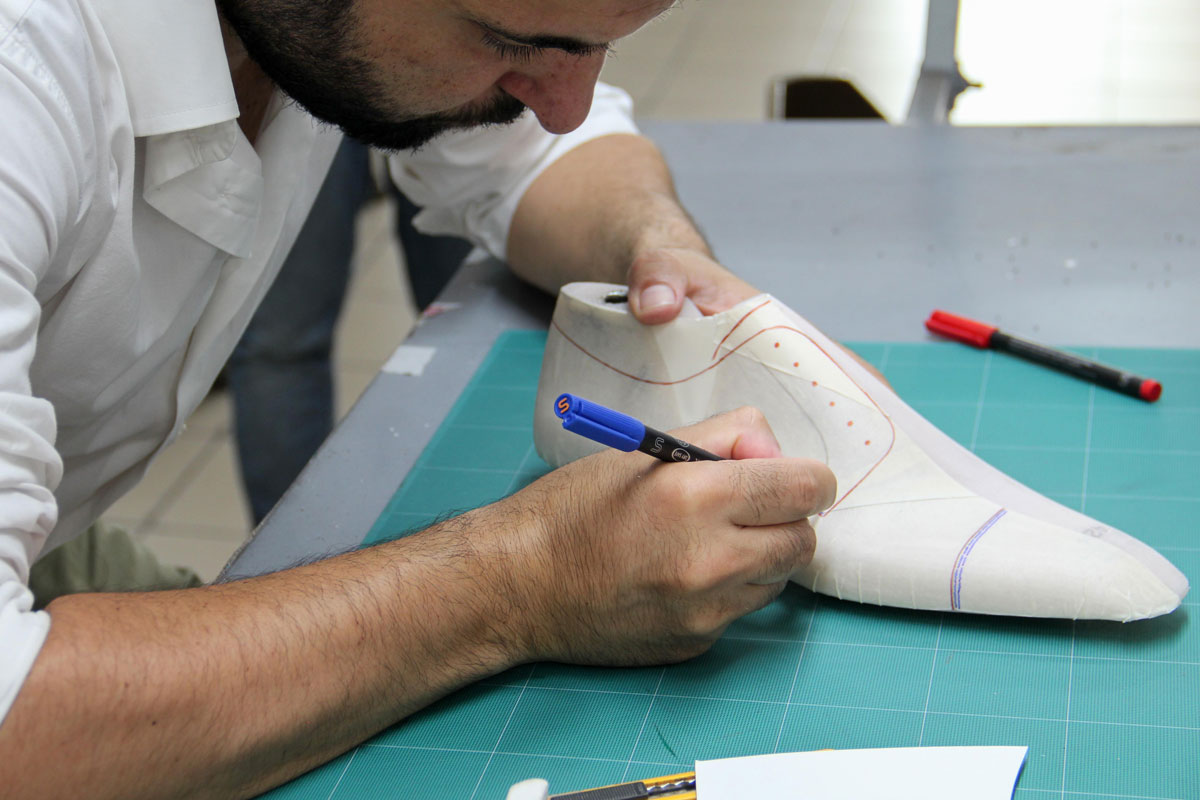
On a very hot day this July, we had the chance to visit a factory in Naples, Italy, where skilled artisans create these rare, esteemed objects. This area is already known around the world for the production of high-end footwear, continuing a tradition rooted in the 19th century that exploded culturally after Word War II. The production process behind Louboutin shoes is entirely led by hand and consists of a minimum 30 steps. Fine leathers and precious fabrics (like cashmere and grosgrain) are cut, sewn, shaped and combined—but everything starts with a drawing.
Louboutin and his staff’s sketches are fleshed out into shapes and turned into a tridimensional design. The pattern-maker obtains a series of flat pieces that will be used for prototyping and—once the final prototype is approved by the designer—for production. The cutting process is key and is also done by hand. Depending on the piece of leather, the single parts are carefully positioned and cut in order to leave as little scraps as possible. It takes almost 15 years of experience to become a professional cutter and it’s incredible to see how fast and precise their hands work.

Precision is of the utmost importance when it comes to working with precious materials such as alligator. In this specific case only one animal skin can be used per shoe. The leather is chosen very carefully in order to make the two shoes as similar as possible, since each animal is unique. Once again it is a matter of fine eyes and expertise. The pieces of leather are flat after cutting, but soon take the shape of the part of the foot they will hold. The curvature is obtained by using machinery that combines pressure and temperature.
Stitching takes place next. The different pieces that will form the upper unite meticulously. “One single upper can be made of 12 different materials,” reveals one of the production managers who took us through the production lines. The artisans focus on their sewing machines with intensity as each stitch is a matter of millimeters, especially with Louboutin’s complex designs.

A red sole acts as a declaration and Louboutin’s signature. Interestingly, this color is obtained not by tanning, but with a secret lacquering process. “This complicates the process quite a bit,” the production manager shares. The soles arrive to the factory from a different production facility and, to avoid scratches, they are protected by a transparent film. It is only removed before when the shoes are boxed.
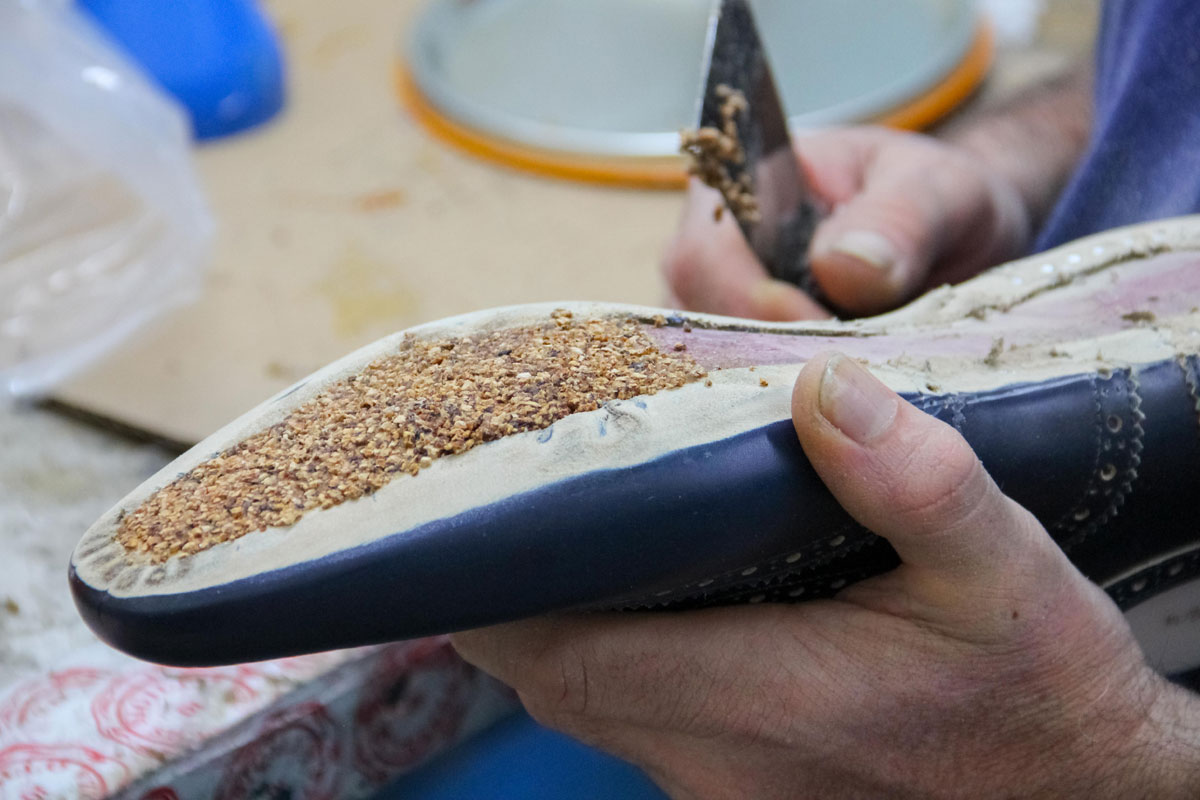
One artisan spreads a special mix of cork and glue onto the interior of the sole before it’s joined to the insole and upper; this padding will make the shoe much more comfortable. This (also secret) blend is kept inside a yellow tin with the logo of a very famous French champagne house. We asked if the blend includes chopped champagne corks, but the Louboutin staff simply smiled without an answer. The phase of sewing the sole consists of making several tiny passes—also rather complex. The hands of the artisans seamlessly switch from cutters to brushes, from cogwheels to wax sticks. Their elegance recalls that of a skilled classical musician.

As soon as the shoes are fully assembled, it’s time to polish. Leather is carefully and repeatedly caressed with pure cotton cloths for almost one hour, using French polish and other potions. Alligator leather, however, comes to the Louboutin factory in white (these blank skins are called “crust”) and it’s not dyed until the shoe is complete. As a final step, the artisans imbue a cloth with the color and literally paint the white upper, very rapidly and with extreme precision. This process guarantees deep and intense shades of color, since the pigments have never been warmed up or even touched during production.

Before leaving the factory, the shoes are inspected and all the edges painted tone-on-tone with a marker, making the shoe sharp and visually uniform—the process comes full circle with more drawing. It’s a gesture that truly feels like a signature by the team of these Neapolitan artisans—and a bond with Paris and the creativity of Christian Louboutin.
Images by Paolo Ferrarini
